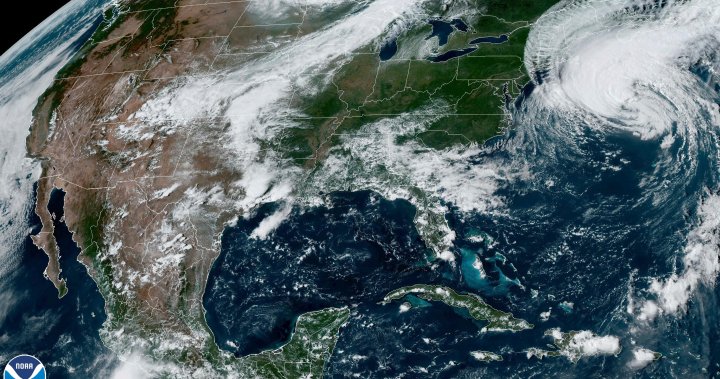Canadians and Americans along the Atlantic coast are being urged to prepare now as forecasters are predicting an above-normal hurricane season.
The U.S. National Oceanic and Atmospheric Administration (NOAA) in its 2024 forecast Thursday said there is an 85 per cent chance of an above-normal season, with 17-25 named storms — when a storm reaches at least 62 kilometres-per-hour sustained winds, eight to 13 hurricanes and four to seven reaching major status.
“Of note, the forecast for named storms and hurricanes and major hurricanes is the highest NOAA has ever issued for the May outlook,” NOAA administrator Rick Spinrad told reporters Thursday. “This season is looking to be an extraordinary one in a number of ways.”
There are several contributing factors, including rising ocean temperatures and the expectation of La Nina coming into action.
La Niña refers to the cooling of surface temperatures in the Pacific Ocean, which leads to greater precipitation and winds. NOAA expects it to take effect in August through to the end of the hurricane season in October.
Hurricanes and tropical storms need fuel and with ocean temperatures higher than normal and earlier than usual it means a greater chance those storms can develop, according to NOAA.

According to NOAA lead hurricane seasonal outlook forecaster Matt Rosencrans, the temperatures in the main area where hurricanes develop has been as high as it normally would be in mid-August, about one to two degrees celsius above normal.
Breaking news from Canada and around the world
sent to your email, as it happens.
However, La Nina is also likely to further development of storms as it can often reduce high-altitude winds — often referred to as wind shear — which can diminish hurricane strength.
The peak hurricane season is typically mid-August to mid-October, with the official season beginning June 1.
The Canadian Hurricane Centre is also making preparations for an active season, with warning preparedness meteorologist Bob Robichaud noting Atlantic Canada typically sees about 35 per cent of the tropical storms enter the region.
“We know there’s probably going to be a lot and there are probably going to be some really intense storms. The question is where are they going to go, and we have to wait till they actually develop to get a good handle on that,” Robichaud said during a press conference Thursday.
Officials say though the forecast may seem concerning, they want people to take away one important word from it: prepare.
U.S. Federal Emergency Management Agency (FEMA) deputy administrator Erik Hooks said this can include determining if people have medication that needs refrigeration, medical devices requiring electricity, mobility issues that could make getting around more difficult in an emergency, and having a plan in place when disaster strikes.

Robichaud echoed Hooks’ comments, while noting someone along the coast may have different risks compared to living inland.
He said once you know your risks you can plan potential solutions if you’re without power or dealing with blocked roads. He added being self-sustainable for up to 72 hours with an emergency kit that includes nonperishable foods and other tools is also wise.
“Those are the sort of things you have to start with, knowing what your risks are and then walking them or working through those risks to try and mitigate those risks whatever they might be,” he said.
Robichaud cautioned, though, storms can come with multiple hazards, adding it is important people keep an eye on the track of the storm as it may help indicate where coastal flooding could occur.
But he said it’s not just weather hazards people should be careful of.
In response to a Global News question during the Thursday press conference about how Canadians can prepare, Robichaud reminded Canadians to have power generators situated outdoors a distance from your home and in a well-ventilated area, noting the sometimes-fatal consequences that can occur from improper use of the devices.
National Weather Service director Ken Graham stressed another reason why officials are encouraging preparation now, before even the first storm has formed, is because of the speed in which they can strengthen.
“In the last 100 years, every single one of these big storms, Category 5s, were a tropical storm the three days prior and several didn’t even exist three days prior,” Graham said.
“They don’t care about a timeline, preparedness is absolutely everything.”
© 2024 Global News, a division of Corus Entertainment Inc.





